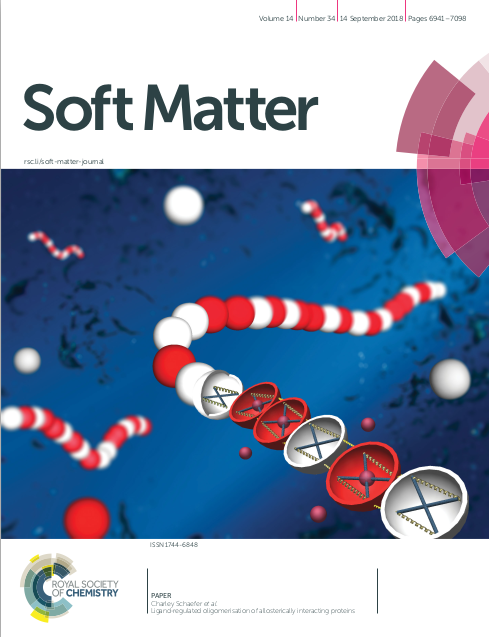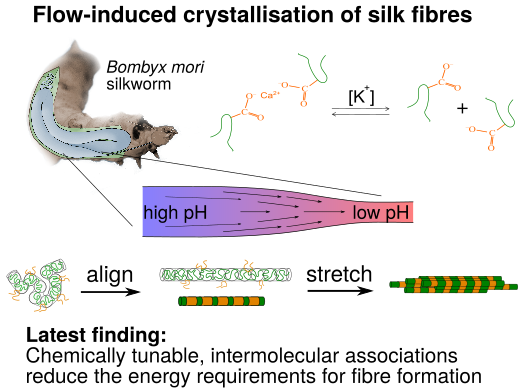Page Not Found
Page not found. Your pixels are in another canvas.
A list of all the posts and pages found on the site. For you robots out there is an XML version available for digesting as well.
Page not found. Your pixels are in another canvas.
Soft Matter in Biology and Materials Science
This is a page not in th emain menu
Published:
This post will show up by default. To disable scheduling of future posts, edit config.yml and set future: false.
Published:
This is a sample blog post. Lorem ipsum I can’t remember the rest of lorem ipsum and don’t have an internet connection right now. Testing testing testing this blog post. Blog posts are cool.
Published:
This is a sample blog post. Lorem ipsum I can’t remember the rest of lorem ipsum and don’t have an internet connection right now. Testing testing testing this blog post. Blog posts are cool.
Published:
This is a sample blog post. Lorem ipsum I can’t remember the rest of lorem ipsum and don’t have an internet connection right now. Testing testing testing this blog post. Blog posts are cool.
Published:
This is a sample blog post. Lorem ipsum I can’t remember the rest of lorem ipsum and don’t have an internet connection right now. Testing testing testing this blog post. Blog posts are cool.
Short description of portfolio item number 1
Short description of portfolio item number 2 
Published in ACS Macro Letters, 2012

Controlling supramolecular polymerisation using electrostatic screening.
Cite: C. Schaefer, I. K. Voets, A. R. A. Palmans, E. W. Meijer, P. van der Schoot, P. Besenius. "Ligand-regulated oligomerisation of allosterically interacting proteins." ACS Macro Lett.. 1, 830-833 (2012) https://pubs.acs.org/doi/abs/10.1021/mz300218e
Published in J. Am. Chem. Soc., 2012

We showed how the solvent quality affects the dynamics of supramolecular polymerisation.
Cite: P.A. Korevaar, C. Schaefer, T.F.A. de Greef, E.W. Meijer ." Controlling Chemical Self-Assembly by Solvent-Dependent Dynamics. " J. Am. Chem. Soc.. 134, 13482-13491 (2012) https://pubs.acs.org/doi/abs/10.1021/mz300218e
Published in J. Chem. Phys., 2013
Kinetic Monte Carlo simulations of surface-catalysed chemical reactions
Cite: C. Schaefer and A.P.J. Jansen ." Coupling of kinetic Monte Carlo simulations of surface reactions to transport in a fluid for heterogeneous catalytic reactor modeling. " J. Chem. Phys. 138, 054102 (2013) https://aip.scitation.org/doi/10.1063/1.4789419
Published in J. Am. Chem. Soc., 2015

We found that the influence of the solvent quality on the polymer fibre size can be understood in terms of classical nucleation theory.
Cite: J. J. van Franeker, G. H. L. Heintges, C. Schaefer, G. Portale, W. Li, M. M. Wienk, P. van der Schoot, R. A. J. Janssen." Polymer Solar Cells: Solubility Controls Fiber Network Formation." J. Am. Chem. Soc.. 137, 11783-11794 (2015) https://pubs.acs.org/doi/abs/10.1021/mz300218e
Published in Macromolecules, 2016
Manufacturing of Organic Solar Cells.
Cite: C. Schaefer, J.J. Michels, P. van der Schoot. "Structuring of Thin-Film Polymer Mixtures upon Solvent Evaporation." Macromolecules. 49, 6858–6870 (2016) https://pubs.acs.org/doi/abs/10.1021/acs.macromol.6b00537
Published in Macromolecules, 2017

Manufacturing of Organic Solar Cells.
Cite: C. Schaefer, J.J. Michels, P. van der Schoot. "Dynamic Surface Enrichment in Drying Thin-Film Binary Polymer Solutions." Macromolecules. 50, 5914-5919 (2017) https://pubs.acs.org/doi/10.1021/acs.macromol.7b01224
Published in Physical Review Letters, 2018
Click here for follow-up research.
Cite: C. Schaefer. " Structuring of Fluid Adlayers upon Ongoing Unimolecular Adsorption. " Phys. Rev. Lett.. 120, 036001 (2018) https://journals.aps.org/prl/abstract/10.1103/PhysRevLett.120.036001
Published in Soft Matter, 2018

Impact of dynamic allostery on supramolecular polymerisation.
Cite: C. Schaefer, R. A. J. de Bruijn, T. C. B. McLeish. "Ligand-regulated oligomerisation of allosterically interacting proteins." Soft Matter. 14, 6961-6968 (2018) https://doi.org/10.1039/C8SM00943K
Published in Soft Matter, 2019

Impact of thermal fluctuations on phase separation during a continuous quench.
Cite: C. Schaefer, S. Paquay, Tom C.B. McLeish. "Morphology formation in binary mixtures upon gradual destabilisation." Soft Matter. Soft Matter, 15, 8450-8458 (2019) https://doi.org/10.1039/C9SM01344J
Published in Macromolecules, 2020
Click here for our follow-up research.
Cite: C. Schaefer, P.R. Laity, C. Holland, T.C.B. McLeish. "Silk Protein Solution: A Natural Example of Sticky Reptation." Macromolecules. 53, 2669–2676 (2020) https://pubs.acs.org/doi/abs/10.1021/acs.macromol.9b02630
Published in Physical Review Letters, 2021

Polymer physics for the linear viscoelastic response of silk feedstock.
Cite: C. Schaefer & T.C.B. McLeish. "Power Law Stretching of Associating Polymers in Steady-State Extensional Flow." Phys. Rev. Lett.. 126, 057801 (2021) https://journals.aps.org/prl/abstract/10.1103/PhysRevLett.126.057801
Published in Science Advances, 2021

Liquid-liquid phase separation of proteins to form membraneless organelles in living bacteria.
Cite: Xin Jin, Ji-Eun Lee, Charley Schaefer, Xinwei Luo, Adam J. M. Wollman, Alex L. Payne-Dwyer, Tian Tian, Xiaowei Zhang, Xiao Chen, Yingxing Li, Tom C. B. McLeish, Mark C. Leake, Fan Bai. "Membraneless organelles formed by liquid-liquid phase separation increase bacterial fitness." Science Adv.. 7, 43 (2021) https://www.science.org/doi/10.1126/sciadv.abh2929
Published in [J. Rheol](https://sor.scitation.org/doi/full/10.1122/8.0000411), 2021

Theoretical rheo-physics of silk: Intermolecular associations reduce the critical specific work for flow-induced crystallisation
Cite: Charley Schaefer & Tom C. B. McLeish, "Theoretical rheo-physics of silk: Intermolecular associations reduce the critical specific work for flow-induced crystallisation." arXiv.. (2021)
Published in [Frontiers in Molecular Neuroscience](https://doi.org/10.3389/fnmol.2022.962526), 2022
Cite: Jack Connor, Steve Quinn, Charley Schaefer, "Sticker-and-Linker Model for Amyloid Beta Condensation and Fibrillation." Frontiers in Molecular Neuroscience. 15, 962526 (2022)
Published in arXiv, 2023
Bio-polymer networks are ubiquitous in nature and fulfil unique mechanical and biological functionalities that sensitively rely on the mesoscopic structure of the network. Understanding how these structures are encoded for by the bio-macromolecular building blocks would open up a powerful means to design novel soft materials, but remains hampered by the enormous complexity of the network down to the molecular level. We focus on the CO2-fixating ‘pyrenoid’ in eukaryotic algae as an exemplar bi-molecular network, which is composed of rigid ‘Rubisco’ holoenzymes with 8 binding sites to which any of the 5 ‘sticker strands’ of the intrinsically disordered polypeptide (IDP) ‘EPYC1’ may bind. As a consequence, a Rubisco-IDP complex has 10^8 structurally different microstates whose expectation values depend on the concentration, sticker binding strength, and on the force-extensiblity of the IDPs. We present a statistical physics approach to tackle this challenge, and apply it to self-consistently model available (i) surface plasmon resonance data on the competitive binding of cleaved (single-sticker) EPYC1 and (ii) fluorescence correlation spectroscopy data on the binding of full (five-sticker) EPYC1 chains. Beyond the quantitative agreement between our model and the experiments, the model pins down the regime of binding affinities and provides quantitative predictions on the structure of the rubisco-EPYC1 complex. Thus, we present a predictive model that enables the parametrisation and screening of IDP sequences towards complex networks of associating (bio-)polymers.
Cite: Charley Schaefer, "Competitive Binding of Force-Extensible Sticker-and-Spacer EPYC1 Polypeptides to a Patchy Colloidal Rubisco Protein." arXiv. (2023) https://arxiv.org/abs/2301.05681
Published:
This is a description of your talk, which is a markdown files that can be all markdown-ified like any other post. Yay markdown!
Published:
This is a description of your conference proceedings talk, note the different field in type. You can put anything in this field.
Undergraduate course, University 1, Department, 2014
This is a description of a teaching experience. You can use markdown like any other post.
Workshop, University 1, Department, 2015
This is a description of a teaching experience. You can use markdown like any other post.